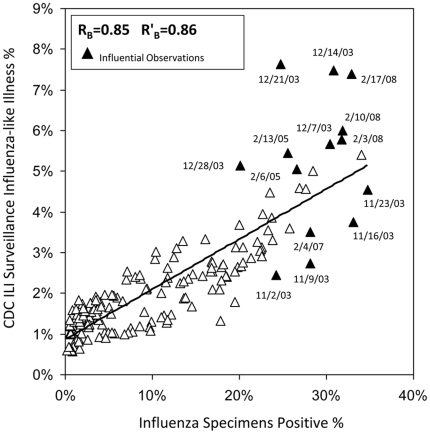Figure 3. Scatter Plot CDC ILI Surveillance and CDC Influenza Laboratory Surveillance; September 28, 2003 through May 17, 2008.
1. Data Sources: a. Outpatient Influenza-like Illness Surveillance Network; (http://www.cdc.gov/flu/weekly/fluactivity.htm); and b. US Influenza Virologic Surveillance System (http://www.cdc.gov/flu/weekly/fluactivity.htm). 2. For CDC influenza surveillance, Influenza-like Illness (ILI) is defined as a fever ≥37.8°C and a cough and/or a sore throat without known etiology [22]. 3. There are 166 total observations in each panel. Influential observations were defined by DFBETA statistic greater than the absolute value of 2 divided by the square root of the total number of observations in a simple linear regression model [17]. 4. RB represents Pearson's correlation coefficients calculated from comparisons of Outpatient Influenza-like Illness Surveillance with US Influenza Virologic Surveillance. 5. R'B represents the calculated Pearson's correlation coefficients after exclusion of all influential observations. 6. Because CDC surveillance is intensified from calendar week 40 through calendar week 20 of the subsequent year, we restricted our correlation analyses to this time period.

